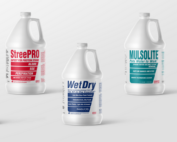
Maximize Your Solvent Mileage: Tips for Efficient Dry Cleaning
When was the last time you checked your solvent mileage? Last week, last month, last year, ever? It’s crucial to monitor your solvent mileage to ensure your drycleaning machine is operating efficiently. Knowing how much solvent you’re purchasing isn’t enough. Whether you’re using perc, high flash hydrocarbon, low flash hydrocarbon, or any of the newer solvents, maximizing your solvent mileage will definitely help your bottom line.
Why Solvent Mileage Matters
Solvent mileage is essentially the measure of how efficiently your machine uses solvent to clean a certain amount of fabric. High solvent mileage means you’re using less solvent per pound of fabric, which translates to cost savings and better environmental stewardship.
Steps to Monitor Your Solvent Mileage
1. Weigh Each Load
First, get a scale to weigh each load. This can be as simple as a bathroom scale and a plastic clothes basket if money is tight. Knowing the exact weight of each load helps you keep accurate records.
2. Use a Poundage Chart
Start using a poundage chart to record the weight of each load. Weigh every load and jot it down. At the end of each day, total the weights, and then sum these daily totals at the end of the week to get a weekly total of pounds cleaned.
Check Your Solvent Levels

Calculate Weekly Solvent Use
At the start of the week, calculate the total amount of solvent in your tanks. If you add new solvent during the week, add this amount to your initial total. At week’s end, measure the remaining solvent in the tanks. Subtract this from the starting amount (plus any added solvent) to find out how many gallons you’ve used that week.
Determine Your Solvent Mileage
To find your solvent mileage, divide the total pounds cleaned by the gallons of solvent consumed during that week. This number will give you a clear picture of your machine’s efficiency.
Optimize Your Solvent Mileage
Once you know your solvent mileage, contact your machine manufacturer to learn the optimum mileage for your specific machine. If your mileage is lower than suggested, discuss ways to improve it with the manufacturer.
Common Causes of Poor Solvent Mileage
Several factors can lead to inefficient solvent use:
- Overloading the Machine: Too much fabric in one load can reduce cleaning efficiency.
- Inadequate Drying Time: Not allowing enough time for drying can lead to solvent wastage.
- Low Drying Temperature: A temperature that’s set too low won’t evaporate the solvent properly.
- Clogged Condensing Coils: Lint and debris in the coils can hinder solvent recovery.
- Improper Still Operation: The still must be functioning correctly to distill and recover solvent.
- Inefficient Extraction Times or Speed: Issues like a slipping belt can reduce solvent extraction.
- Dry Control Settings: Ensure your dry control system is working and set correctly.
Practical Tips for Improvement
- Regular Maintenance: Keep your machine in top condition by performing regular maintenance checks.
- Training Staff: Ensure all staff are properly trained in operating the dry cleaning machine efficiently.
- Consulting Experts: If you can’t pinpoint the issue, hire a mechanic or consult the manufacturer.
Conclusion
Maximizing your solvent mileage isn’t just about saving money—it’s also about running a more efficient and environmentally friendly operation. By weighing each load, tracking solvent use, and addressing any inefficiencies, you can significantly improve your drycleaning business’s performance. Check your machine regularly, keep detailed records, and don’t hesitate to seek expert advice. The savings and environmental benefits will be well worth the effort!



